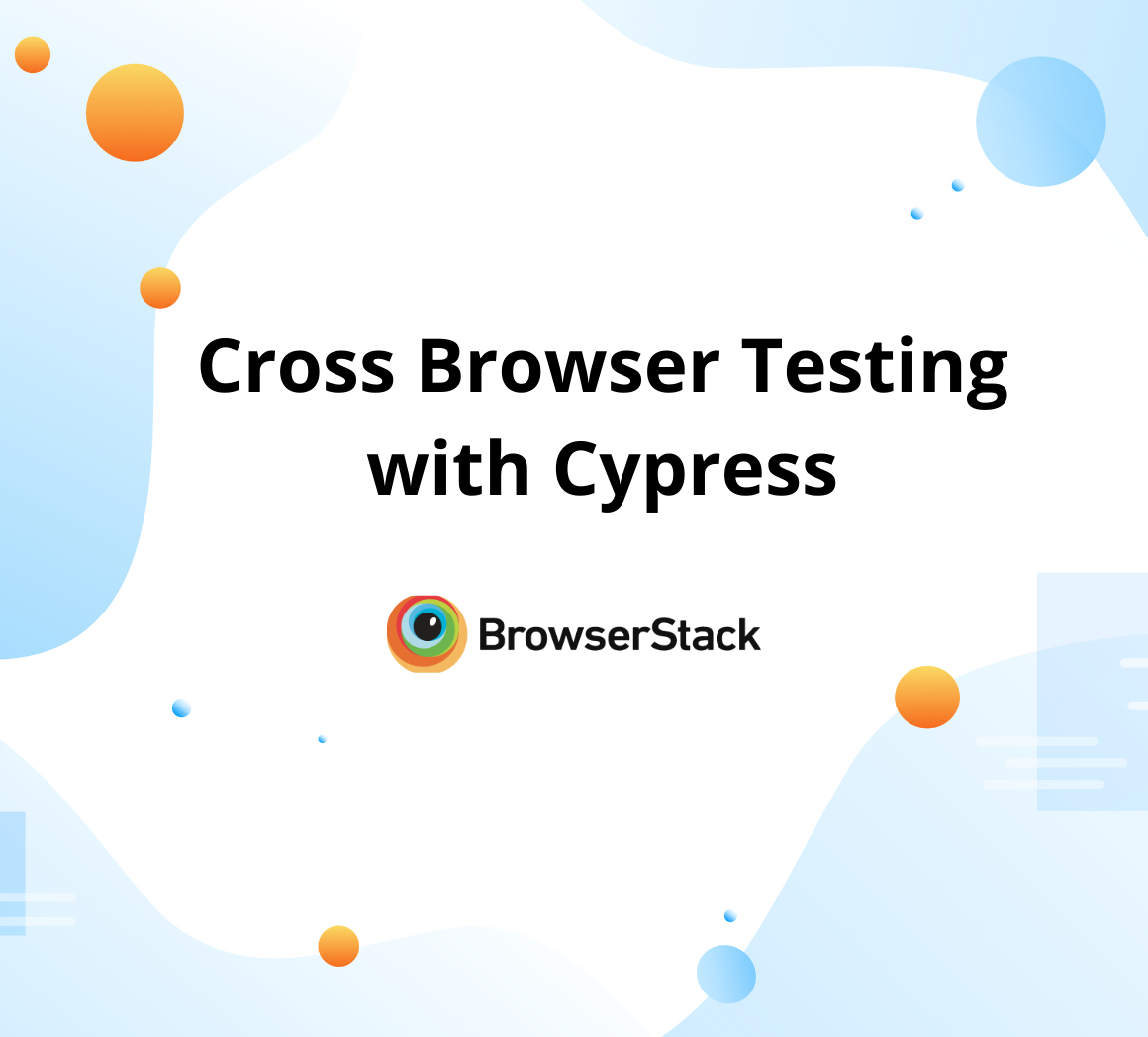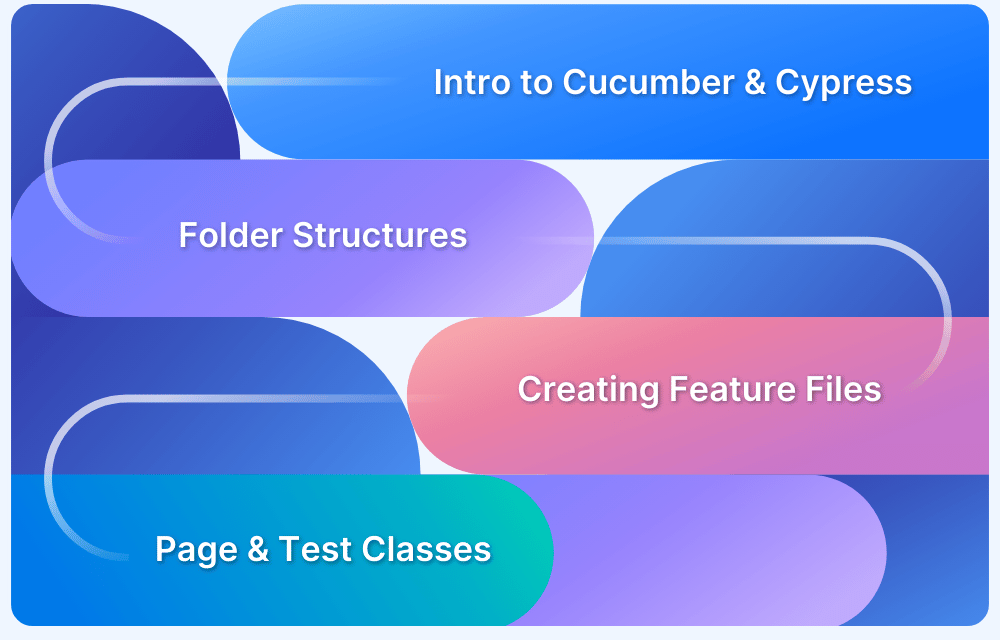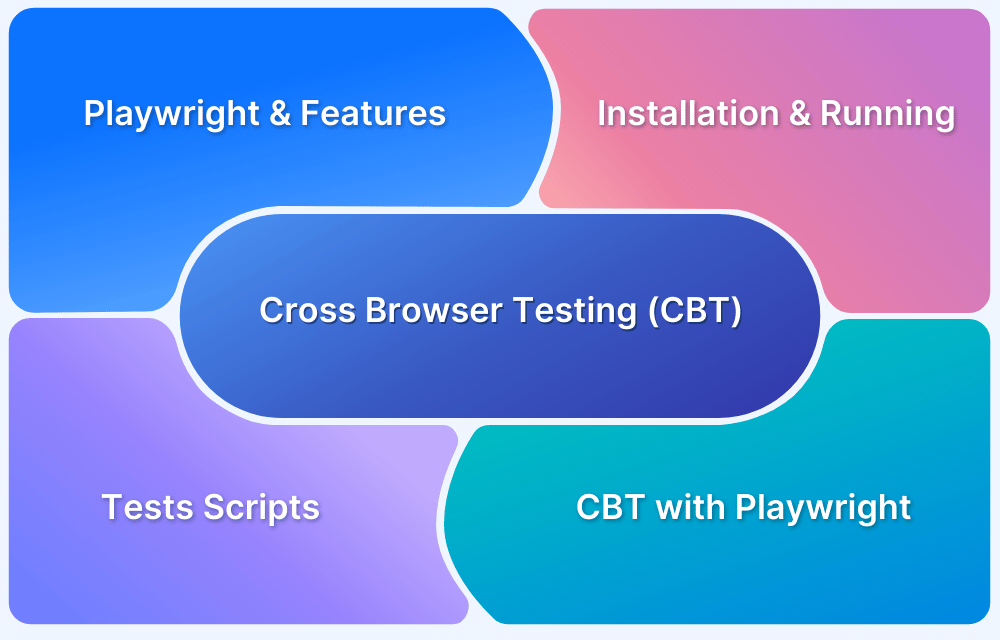Users now expect websites to perform seamlessly, no matter what browser or device they use. Cross-browser testing will identify compatibility issues, helping developers maintain functionality and design integrity.
The cost of premium tools for cross-browser testing can make it feel like a challenge reserved for big-budget projects. However, several free tools make cross-browser testing more accessible, providing valuable features for testing websites across multiple browsers and devices.
This guide explores the top free cross-browser testing tools that can streamline cross-browser testing and help meet diverse user needs.
What is Cross-Browser Testing?
Cross-browser testing is the process of validating whether a website or a web application works appropriately on multiple web browsers. It checks how the designs, functionalities, and general behavior of a site work in various browsers, including Chrome, Firefox, Safari, and Edge. The intent is to provide uniform usability, irrespective of the browser used.
Top 10 Free Cross-Browser Testing Tools
There are many free tools to use for streamlining cross-browser testing, all with slightly different features that ensure a good performance on your site in various browsers. Here are the best free cross browser testing tools:
Free Cross Browser Testing Tools
- BrowserStack Automate
- Selenium
- Cypress
- Playwright
- Puppeteer
- TestCafe
- DebugBar
- Microsoft Edge DevTools
- Chrome DevTools
- Webdriver IO
1. BrowserStack Automate
BrowserStack Automate is a powerful, cloud-based testing platform. It allows developers to run automated tests on real devices and browsers. It supports seamless integration with popular testing frameworks such as Selenium, Cypress, etc., thereby facilitating cross-browser testing at scale. The platform offers a full-fledged free trial to test all its features before you commit to it.
Key features
- Real-device testing on various devices, browsers, and operating systems.
- Integrate with the most widely adopted frameworks, such as Selenium or Cypress.
- Run parallel testing for quicker test runs and testing cycles.
- Test under real user conditions like different network types (3G,4G, etc.) and IP geolocation.
- Visual testing on various browsers to detect discrepancies.
- Integrate with CI/CD tools such as Jenkins, Circle CI, and more.
Verdict: BrowserStack Automate is suited for developers who need reliable cross-browser testing in real-time with multiple devices. The free trial would be a fantastic opportunity to experiment with advanced features and test your website or app on various versions of browsers across devices. Thus, it ensures compatibility and improved coverage in tests. It also accelerates development cycles with no-hassle automation and cloud infrastructure.
2. Selenium
Selenium is an open-source testing framework. It offers several tools that can be applied to automate browsers. It widely supports cross browser testing with the ability to mimic user interactions that can validate functionality across most browsers. Selenium supports multi-language coding, such as Java, Python, and C#.
Key features
- Supports all major browsers – Chrome, Firefox, Safari, and Edge.
- Enables the test to run across various operating systems like Windows, macOS, and Linux.
- Test can be easily integrated with testing frameworks such as JUnit, TestNG, and Cucumber.
- Offers rich support for parallel test execution and grid testing.
Verdict: Selenium is a powerful tool for cross-browser testing and automation. It is highly flexible, has many features, and can be used by any team looking for an open-source solution. However, it will require more technical skills to set up and use, than other tools. It’s suitable for developers or teams with experience in coding and automation who need control over their testing environments.
3. Cypress
Cypress is an open-source, modern testing framework that specializes in end-to-end web application testing. As opposed to typical cross-browser test tools, it executes directly in the browser with rapid and predictable test execution. With in-built debugging and automated waiting for the tests, Cypress makes it easy to test for developers.
Key features
- Supports the testing of browsers such as Chrome, Edge, and Firefox.
- Supports real-time reloading to provide immediate feedback on tests.
- Features built-in debugging capabilities for quick identification of problems.
- Runs test within the browser for quicker execution.
- Provides detailed test reports with screenshots and video recordings.
Verdict: Cypress is best suited for developers who require a speedy and trustworthy testing environment. Although it is good for end-to-end testing, it has poor browser support in contrast to other cross-browser testing solutions. It best suits teams developing modern web applications and automated testing.
Read More: How to choose a Cross Browser Testing Tool
4. Playwright
Playwright is a fast, open-source cross-browser testing framework. It was created by Microsoft and allows testing on multiple browsers using a single API. Playwright is built for modern web applications with fast, reliable, and parallel testing needs.
Key features
- Supports popular browsers like Chrome, Firefox, Safari, and Edge.
- Supports headless and headed testing for easy execution.
- Includes built-in support for mobile emulation and device testing.
- Records detailed logs, screenshots, and videos for debugging.
- Serves multiple browsers with a single test script.
- Supports automation of both frontend and backend tests.
- Provides enhanced debugging tools to detect problems immediately.
Verdict: Playwright is best suited for teams that require quick, scalable, and automated cross-browser testing. Although it does need some coding expertise, its extensive browser support and advanced automation make it a good option for developers and QA teams.
5. Puppeteer
Puppeteer is a headless browser automation library created by Google. It has a high-level API to manipulate Chrome and Chromium, and hence it is largely used in automated testing, web scraping, and performance testing. Its speed and performance make it the best for the developers who require exact browser automation.
Key features
- Supports full-browser and headless testing of Chrome and Chromium.
- Facilitates automated UI testing with exact control over the actions of the browser.
- Captures PDFs and screenshots for visual verification.
- Provides network interception and performance testing.
- Integrates built-in debugging tools for effective debugging.
Verdict: Puppeteer is a good option for teams working with Chrome-based applications. Although it has no native support for other browsers, its speed, efficiency, and in-depth Chrome integration make it a good testing and automation tool. It is best suited for projects that need fine-grained control over browser behavior.
6. TestCafe
TestCafe is an easy-to-use, open-source end-to-end web testing framework. It is run on Node.js and allows testing on multiple browsers without the use of browser plugins or WebDriver. Its ease of setup and built-in parallel execution are a comfort for developers and QA teams.
Key features
- Allows cross-browser testing across Chrome, Firefox, Safari, Edge, and others.
- Executes tests without WebDriver or browser extensions.
- Delivers built-in parallel test running for quicker results.
- Provides automatic waiting to decrease flaky tests.
- It has integrated debugging and test recording capabilities.
Verdict: TestCafe is a good choice for teams who need an easy, effective testing tool. It doesn’t offer quite as many sophisticated debugging features as some of its competitors, but its simplicity, cross-browser capability, and integration with automation are compelling reasons to use it to test web applications.
7. DebugBar
DebugBar is a web debugging extension designed to debug web pages and perform cross-browser testing. It is available for Internet Explorer. It has the potential to provide developers with some powerful tools that are designed to help debug problems of website performance, layout, and functionality on other browsers. DebugBar offers real-time insights, which means pinpointing issues is easy, and websites are optimized accordingly.
Key features
- Real-time debugging tools for testing websites in Internet Explorer.
- Allows HTML, CSS, and JavaScript to be inspected for errors.
- Network monitoring allows HTTP requests and responses to be tracked.
- Detailed performance metrics are available to analyze the speed of a website.
- Customizable toolbar with several debugging and testing features.
Verdict: DebugBar is a valuable developer debug tool, especially for cross-browser testing and debugging web pages in Internet Explorer. However, it only supports Internet Explorer, not multiple browsers. So, it’s more viable for developers who want a lightweight means of debugging websites in Internet Explorer and may not be appropriate for those applications built for users of other Internet browsers.
8. Microsoft Edge DevTools
Microsoft Edge DevTools is a built-in suite of web development tools for the Microsoft Edge browser. The suite provides a range of features that allow developers to test, debug, and optimize websites directly within the browser. Although primarily built for Edge, DevTools can also help identify issues with cross-browser compatibility by simulating different devices and screen sizes.
Key features
- Provision of tools for real-time inspection of HTML, CSS, and JavaScript.
- Offers performance analysis to improve website speed and load times.
- Simulates different devices, screen resolutions, and orientations.
- Built-in tools for debugging network requests, errors, and performance bottlenecks.
- Supports integration with Lighthouse for web performance auditing.
Verdict: Microsoft Edge DevTools offers powerful debugging and performance optimizations. It is a robust free tool for developers who focus on working with Microsoft Edge. It works well for testing responsive designs and page loading times. Since it solely supports Edge, it is not ideal for cross-browser tests. It’s rather most suited to the edge-centered testing needs or for people looking forward to optimizing their websites for it.
9. Chrome DevTools
Chrome DevTools is a robust collection of development tools within Google Chrome. This provides real-time access to inspect, debug, and optimise web pages. Though mainly intended for Chrome, the emulation capability of this tool regarding device rendering and performance evaluation makes it necessary for testing cross-browser support. It is particularly useful to test responsiveness and performance due to differing screen sizes or devices.
Key Features
- Inspect HTML, CSS, and JavaScript in real time.
- Device emulation for testing across a range of screen sizes and resolutions.
- Detailed performance analysis to improve website speed and efficiency.
- Network panel to monitor requests and troubleshoot issues.
- Audits and accessibility checks to ensure your website is user-friendly.
Verdict: Chrome DevTools is an essential tool for developers working with Google Chrome. Its debugging, performance analysis, and device emulation capabilities make it perfect for testing and optimizing websites, especially those with mobile-first design. However, it is limited to only Chrome and does not directly support testing other browsers. Therefore, it is best suited for developers focused on optimizing Chrome or testing responsiveness across multiple types of devices.
10. WebDriverIO
WebDriverIO is an open-source, flexible testing framework for automating browsers and mobile applications. Based on WebDriver and Chromium DevTools, it can address both conventional and advanced web testing requirements. With its easy integrations and configurable setups, it supports developers and QA teams. Due to its flexibility, it can be used for projects from simple UI tests to intricate automation pipelines.
Key features
- Supports testing on all the major browsers such as Chrome, Firefox, Safari, and Edge.
- Offers WebDriver and DevTools protocol support for improved automation.
- Supports cross-browser and mobile testing through Appium integration.
- Includes built-in reporting, debugging, and parallel test execution.
- Supports different testing frameworks such as Mocha, Jasmine, and Cucumber.
Verdict: WebDriverIO is a great option for teams that require an extensible automation framework. Although it has some setup and coding requirements, its flexibility, deep integrations, and cross-platform support make it the best option for large-scale web and mobile testing.
Cross-Browser Testing Tools Comparison
The table below highlights the features of the top free cross-browser testing tools:
| Tool | Trial Period | Usability | App Profiling | Real Device Testing | Manual Performance Testing | Automated Performance Testing | Support | G2 Rating |
|---|---|---|---|---|---|---|---|---|
| BrowserStack Automate | Free Trial | Easy to use | Available | Yes | Yes | Yes | 24/7 support, live chat | 4.5/5 |
| Selenium | No trial | High technical knowledge is required | Limited | No | Yes | Yes | Community support, documentation | 4.5/5 |
| Cypress | Free and open-source | Developer friendly, intuitive API | Not Available | No | Yes | Yes | Community support | 4.7/5 |
| Playwright | Free and open-source | Modern and scalable | Not Available | No | Yes | Yes | Active community support, Microsoft support | 4.8/5 |
| Puppeteer | Free and open-source | Lightweight, Chrome-focused | Not Available | No | Yes | Yes | Google-backed community support | 4.5/5 |
| TestCafe | Free and open-source | Simple setup | Not Available | No | Yes | Yes | Community support | 4.2/5 |
| DebugBar | No trial | Basic, browser-specific | Not available | No | No | No | Limited support | NA |
| Microsoft Edge DevTools | No trial | Very easy to use | Not available | No | Yes | No | Microsoft support | NA |
| Chrome DevTools | No trial | Easy and integrated into Chrome | Not available | No | Yes | No | Google support | 4.4/5 |
| WebDriverIO | Free and open-source | Flexible and highly customizable | Not Available | Yes (vis Appium) | Yes | Yes | Community support | N/A |
Limitations of Free Tools
Free cross-browser testing tools are invaluable for testing and ensuring compatibility with the browser. However, free tools have some restrictions as well. Here are the key limitations of using free tools:
- Limited Coverage: Free tools offer limited browser and device coverage, thus limiting the scope of cross-browser testing.
- Lack of Advanced Functionalities: Advanced features like app profiling, performance testing, and automation are not available in the free versions.
- Limitations in Free Plans: Free plans usually limit the number of tests or the length of each testing session.
- Emulator-based Testing: Most free tools use emulators instead of real devices, which may cause inaccurate results, especially for mobile devices.
- Basic Reporting: Reporting and debugging features are usually fundamental, such as providing only screenshots or limited error logs.
- Limited Support: Support for free tools is usually limited to forums or email, with no live chat or quick response times.
- Absence of Automation Features: Automation features such as integration with Selenium often aren’t found in free tools.
- Performance Testing Limatations: Less detail in terms of performance testing and even simulation with real user traffic is difficult.
- Not Suitable for Complex Projects: Small projects can be tested with free tools, but they are not useful for complex projects on a larger scale.
Therefore, the best practice would be to opt for tools that offer free trials with access to all advanced features.
When to Upgrade
You should upgrade to a paid cross-browser testing tool when a project or testing need starts to outgrow the limitations that free tools provide. Mentioned below are some situations to upgrade:
- Wider Coverage: If you require testing across a wider range of browsers, devices, or operating systems, then switch to paid versions for extended coverage, including mobile and legacy browsers.
- Advanced features: Paid plans provide access to advanced features like automated testing, app profiling, detailed performance testing, and integration with CI/CD tools, which are essential for large or ongoing projects.
- Extended Testing Hours: If you hit limits on the number of tests or test time, paid versions offer more generous or unlimited testing hours, allowing for more extensive quality assurance.
- Real Device Testing: Paid tools often include real device testing, ensuring more accurate results, particularly for mobile and tablet responsiveness.
- Detailed Reporting: Paid tools offer in-depth reports, detailed error logs, and integration with issue-tracking systems, making it easier to identify and fix issues faster.
- Responsive Support: Priority support, including live chat and faster response times, are available with paid versions, ensuring that any issues are resolved promptly.
- Automation features: Only paid tools offer automation features, such as Selenium or Appium integration, to streamline testing and reduce manual effort for large projects or continuous integration.
Why Use BrowserStack for Cross-Browser Testing?
BrowserStack Automate is one of the best cross-browser testing platforms offering manual and automated testing capabilities.
Here’s why it stands out:
- Comprehensive Browser and Device Coverage: BrowserStack supports over 3500+ real browsers and devices. This way, you can test your website or app on various mobile, tablet, and desktop platforms.
- Real Device Testing: Unlike many other tools, BrowserStack allows testing on real devices. This means that your tests will reflect real-world performance and user experiences.
- BrowserStack Live for Manual Testing: BrowserStack Live allows for real-time manual testing on various browsers and devices. It is suitable for rapidly identifying problems across multiple environments and making adjustments without delay.
- BrowserStack Automate for Automated Testing: BrowserStack Automate streamlines the testing process through scalable, parallel test execution using frameworks such as Selenium, Cypress, and others. It accelerates testing cycles and allows teams to simultaneously run automated tests on multiple devices.
- No Setup Required: With BrowserStack, there is no need for complicated environments and virtual machines to set up. You simply need to log in and start testing across browsers and devices immediately.
- CI/CD Integration: BrowserStack integrates with popular CI/CD tools, such as Jenkins, CircleCI, Travis CI, etc., to let continuous testing become part of your development pipeline.
- 24/7 Support: BrowserStack offers 24/7 customer support so that the testing process can be performed at any hour of the day or night without hassle.
Conclusion
Cross-browser testing is crucial to ensure a consistent experience for the user across different web browsers on multiple platforms. Whether you choose manual or automated cross browser testing, several free tools are available. While these have basic features to test applications for various browsers, the paid versions offer better usability and customer support.
BrowserStack Automate is the ultimate solution for teams seeking advanced automation, scalability, and real device testing. This feature enables the parallel execution of tests on multiple browsers and devices and speeds up the testing cycle, giving faster and more reliable results. Moreover, the free trail option allows you to use extensive features for testing before making a payment commitment.






